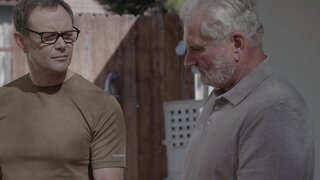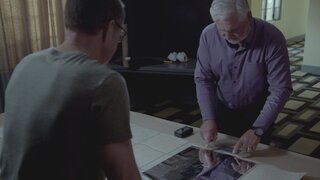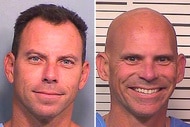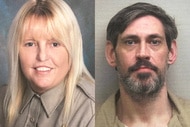Create a free profile to get unlimited access to exclusive videos, breaking news, sweepstakes, and more!
Five-Decade Vermont Cold Case Solved With Discarded Cigarette Butt And Genetic Genealogy
"He would be 83 today, but there is not a cop in this building who would not happily put handcuffs on him," Burning Police Chief Murad John said of William DeRoo, who died of a drug overdose in 1986, years after allegedly killing 24-year-old Rita Curran.
DNA evidence from a cigarette butt solved a cold-case murder that stumped Burlington detectives for 52 years.
At a Tuesday press conference, the Burlington Police Department announced that they have finally identified the perpetrator of 24-year-old Rita Curran's sexual assault and murder in her apartment in July 1971. DNA technology and genetic genealogy identified William DeRoos, another tenant in the building that lived two floors above her, as the killer.
But DeRoos died of acute morphine poisoning at a San Francisco hotel in 1986, according to Police Chief John Murad.
RELATED: 1989 Jane Doe ID'd As Missing California Woman Whose Infant Daughters Remain Missing
"He would be 83 today, but there is not a cop in this building who would not happily put handcuffs on him," Murad said.
"We're all confident that William DeRoos is responsible for the aggravated murder of Rita Curran," echoed Lieutenant J.T. Trieb. "Because he died in a hotel room of a drug overdose, he will not be held accountable for his actions, but the case will be closed."
Using forensic genealogy, detectives linked a cigarette dropped by Curran's body to her long-dead killer.
The LARK-brand cigarette butt was carefully collected and preserved by detectives at the time in the hopes that DNA technology would improve in the future, said at the press conference.
"It hadn't been crushed or put out," he recalled. "It had been dropped there."
Forensic genealogy firm Parabon was able to match the DNA profile generated from the discarded cigarette to existing genetic data available on an open-source ancestry website, Trieb said, absolving the department's existing 13 suspects in the case.
Police tracked down DeRoos' half-brother in Alabama to confirm their findings, according to WCAX. Further DNA from the housecoat Curran was wearing was tested at another lab in Florida, after which it was confirmed that DeRoos was the culprit, according to reporting by USA Today.
Detectives questioned DeRoos and his wife, Michelle DeRoos, shortly after Curran's strangled body was discovered by her roommates. The couple told police that they had been in the apartment together at the time of the killing, but Michelle has since changed her story.
According to investigators, the wife later said that DeRoos left their apartment on the evening of July 19, 1971 to take a "cool-down walk" after the couple got into an argument. During this period, police said, he let himself into Curran's apartment through an unlocked door while her three roommates were out drinking at a nearby bar.
He returned home after his wife had gone to bed for the evening, she told police five decades later, and asked her to tell police that he had been with her that night when police came knocking the next day.
DeRoo did not know Curran personally — according to WCAX, the second-grade teacher had just moved into the Brookes Avenue apartment from her parents' house several weeks earlier.
Murad said on Tuesday that she maintained that story even after her marriage dissolved and DeRoos fled to Thailand, where he became a Buddhist monk. Police Corporal Tom Chenette said he believes she was coerced into providing an alibi.
Ultimately, DeRoos moved to San Francisco and remarried in 1974. There, police said, his violent tendencies continued — he was arrested for strangling his second wife Sarah Hepting, they said, and later stabbed a female friend without provocation. When Hepting asked why he had stabbed the woman, Hepting told police that he replied, "I thought I was stabbing you."
Former Senator Patrick Leahy, the county prosecutor at the time of the murder, said that although he saw his share of violent crime scenes, Rita Curran's killing stuck with him. He was proud to finally have answers for the woman's family.
"They weren't going to bring Rita Curran back but they could at least bring closure," he said of detectives' efforts. "And after 50 years, they did."
Curran's younger sister, Mary Curran Campbell, told WCAX that their family was "numb."
“Fifty-one-and-a-half years and it’s the guy upstairs," she said. “The years rolled into decades... Even though we might not ever give up hope, we really felt at this point the person was probably dead. We’d never know who did it.”
The sister said her close-knit family carried her through the long years of uncertainty.
“I had only 22 years and it’s been 50. My children never knew her. My grandchildren never knew her,” Curran Campbell said. “They’re the ones. And people say, ‘How’d you get through it? How did you get through it?’ I got a lot of rocks holding me up.”
Ted Bundy was thought to be Curran's killer at one point, according to the Burlington Free Press, because he may have been in the area at the time of her killing. There is currently no evidence that links DeRoos to other unsolved Vermont murders, but his DNA is now stored in a national database.



























